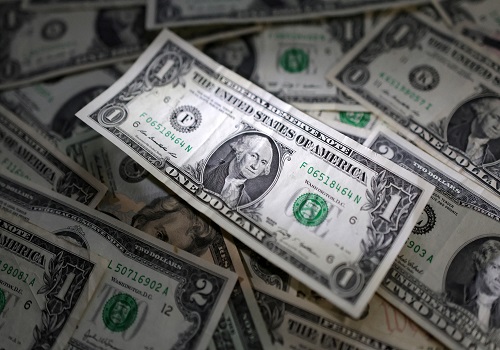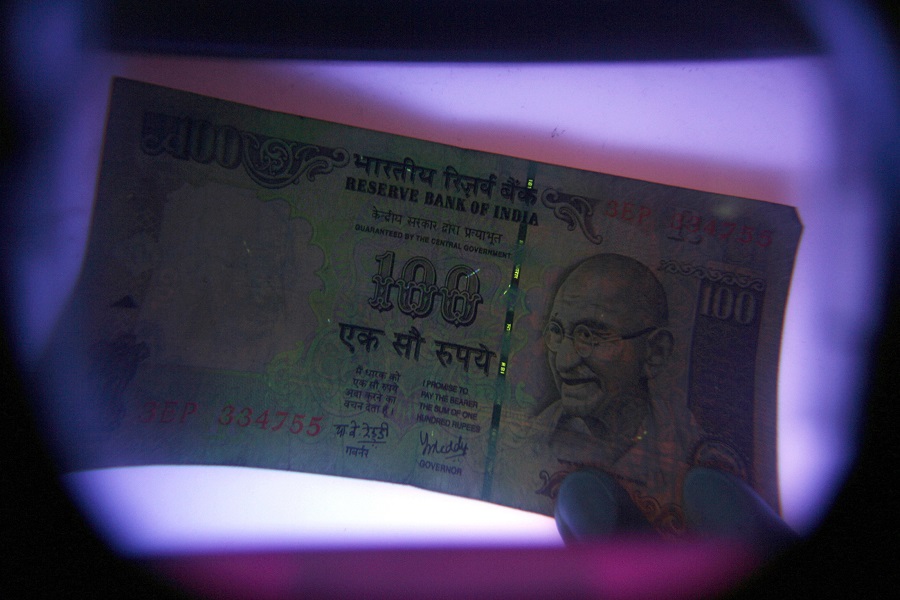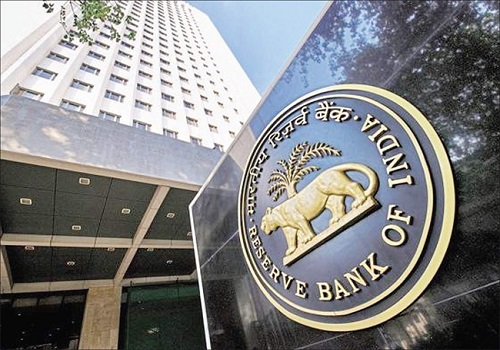Zinc trading range for the day is 265.9-270.3 - Kedia Advisory

Gold
Gold prices declined marginally by 0.05% to settle at ?85,481 as persistent inflation in the U.S. reinforced expectations of a hawkish Federal Reserve. January’s headline inflation unexpectedly rose to 3%, while the core inflation gauge stood at 3.3%, exceeding forecasts. These figures fueled concerns that the Fed may delay rate cuts, leading investors to shift towards interest-bearing assets instead of bullion. Fed Chair Powell reiterated that with the economy remaining strong, there is no urgency to cut rates, highlighting the risks of both premature and delayed policy easing. Despite these pressures, gold prices have held over 10% higher since the start of the year, supported by dovish monetary policies from other major central banks like the ECB, BoE, RBI, and BoC. Physical demand remained weak in India as record-high gold prices discouraged buyers, with dealers offering a discount of up to $31 per ounce over official prices. In China, demand was subdued post-Lunar New Year, with gold trading at a $7-$10 discount, while Japan saw discounts of $3 and occasional premiums of $1. The World Gold Council reported an 11% decline in global jewelry demand in 2024, with India’s gold consumption projected to moderate between 700-800 metric tons in 2025, compared to 802.8 tons last year. Technically, the market is under long liquidation, with open interest dropping by 0.09% to 16,417 as prices declined by ?42. Gold is finding support at ?84,795, with further downside potential to ?84,100, while resistance is at ?85,925, and a breakout above could push prices to ?86,360.
Trading Ideas:
* Gold trading range for the day is 84100-86360.
* Gold dropped as evidence of high inflation in the US backed hawkish bets for the Fed.
* Fed Chair Jerome Powell reiterated that the central bank doesn't need to rush to lower policy rates.
* PBoC increasing its reserves for the third consecutive month in January.
Silver
Silver prices rose 0.99% to settle at ?95,502 as ongoing supply deficits and strong industrial demand continued to support the market. The Silver Institute projected a fifth consecutive year of significant deficits in 2025, driven by record-high industrial demand and robust retail investment. Silver held in London vaults fell 8.6% in January, marking the steepest monthly drop since LBMA records began in 2016. Meanwhile, Federal Reserve Chair Jerome Powell reiterated that the Fed is in no hurry to cut rates, citing persistent inflation and a strong economy. The latest U.S. inflation data showed an uptick to 3% in January from 2.9% in December, reinforcing the likelihood of prolonged high interest rates. Despite economic uncertainties, silver demand is forecast to remain strong, with global consumption expected at 1.20 billion ounces in 2025. Industrial demand is projected to hit a record high, surpassing 700 million ounces, supported by green energy applications. Silver physical investment is set to rise by 3%, mainly from Europe and North America, while jewelry demand is expected to decline by 6%, led by a double-digit drop in India due to high local prices. Silver supply is also forecast to rise by 3% to an 11-year high of 1.05 billion ounces, with mine production reaching a seven-year high of 844 Moz. Technically, the market is witnessing fresh buying, with open interest rising by 2.79% to 20,157 as prices gained ?934. Silver has immediate support at ?94,230, with a break below possibly testing ?92,955, while resistance stands at ?96,190, and a move above could push prices toward ?96,875.
Trading Ideas:
* Silver trading range for the day is 92955-96875.
* Silver gained as the Silver Institute forecast a fifth consecutive year of significant market deficits in 2025.
* LBMA said that silver held in London vaults totalled 23,528 metric tons at the end of January, down 8.6% from the previous month.
* Fed Powell reaffirms that fed is in no rush to cut rates
Crude oil
Crude oil prices fell 2.21% to settle at ?6,226, pressured by rising U.S. crude inventories and Federal Reserve Chair Jerome Powell’s hawkish remarks, signaling slower rate cuts. The U.S. Energy Information Administration (EIA) reported that crude stocks rose by 4.1 million barrels to 427.9 million barrels, exceeding the expected 3 million-barrel increase. Crude inventories at the Cushing, Oklahoma hub rose by 872,000 barrels, while refinery crude runs increased by 82,000 barrels per day. However, gasoline stocks declined by 3 million barrels against expectations of a 1.4 million-barrel build. Distillate stockpiles increased slightly by 0.1 million barrels, defying forecasts of a larger drawdown. U.S. crude production is set to reach a record 13.59 million barrels per day (bpd) in 2025, up from the previous estimate of 13.55 million bpd, as President Trump pushes for maximum output. However, energy companies remain cautious, prioritizing capital discipline over aggressive expansion. Meanwhile, OPEC+ reaffirmed its gradual production increase from April, with ongoing output cuts until March due to global demand uncertainties. Brent crude is expected to average $74 per barrel in 2025 before declining to $66 in 2026 due to rising supply and subdued demand growth. Technically, the market remains under selling pressure, with open interest surging by 152.99% to 9,801 as prices declined by ?141. Crude oil has immediate support at ?6,173, with a break below likely testing ?6,120. On the upside, resistance is seen at ?6,322, with a move above potentially pushing prices toward ?6,418.
Trading Ideas:
* Crudeoil trading range for the day is 6120-6418.
* Crude oil dropped on expectations that U.S. crude oil inventories will record another increase, indicating weak demand.
* U.S. crude stocks and distillate inventories rose while gasoline stockpiles fell last week - EIA
* U.S. oil production is poised to set a larger record this year than prior estimates.
Natural gas
Natural gas prices edged up 0.62% to settle at ?308.2, supported by increased LNG exports, a decline in daily output, and forecasts for colder-than-expected weather driving higher heating demand. The U.S. Lower 48 gas production averaged 105.9 billion cubic feet per day (bcfd) in February, up from 102.7 bcfd in January when freeze-offs had disrupted supply. The current output is also higher than the December 2023 record of 104.6 bcfd. Meanwhile, meteorologists predict colder-than-normal conditions until February 23, boosting demand projections from 135.5 bcfd this week to 142.0 bcfd next week. LNG exports remain strong, with gas flows to the eight major U.S. LNG export terminals averaging 15.2 bcfd in February, up from 14.6 bcfd in January and surpassing the previous record of 14.7 bcfd set in December 2023. The latest U.S. storage report showed a withdrawal of 174 billion cubic feet (bcf) for the week ending January 31, exceeding market expectations of 168 bcf, bringing total inventories down to 2,397 bcf. Storage levels are now 8% lower than the same period last year and 4.4% below the five-year average, reflecting strong heating demand. Technically, the market is under fresh buying, with open interest rising 3.6% to 16,284 as prices gained ?1.9. Natural gas has immediate support at ?303.3, with a break below potentially testing ?298.3. On the upside, resistance is at ?312.1, and a move above this could push prices toward ?315.9.
Trading Ideas:
* Naturalgas trading range for the day is 298.3-315.9.
* Natural gas gained on rising flows to LNG export plants, a drop in daily output and forecasts for cold weather.
* U.S. natural gas output and demand will both rise to record highs in 2025 – EIA
* EIA projected dry gas production will rise from 103.1 bcfd in 2024 to 104.6 bcfd in 2025 and 107.3 bcfd in 2026.
Copper
Copper prices rose 1.21% to settle at ?864.25, supported by concerns over U.S. tariff policies and expectations of higher base metal consumption in China. The premium of U.S. Comex copper futures over the London Metal Exchange surged to a record $920 per metric ton, up from $558, reflecting supply tightness. Market sentiment was also buoyed by expectations of aggressive fiscal stimulus from the Chinese government, aimed at boosting domestic copper ore resources by 5-10% by 2027. Additionally, China’s imports of unwrought copper and copper products rose 17.8% year-on-year in December to 559,000 metric tons, reinforcing strong demand fundamentals. Chile’s state copper commission, Cochilco, maintained its price forecast for 2025 at $4.25 per pound, the same level projected for 2026, while expecting copper prices to remain above $4.00 over the next decade. Global copper market fundamentals also indicate supply tightness, with the International Copper Study Group (ICSG) reporting a deficit of 131,000 metric tons in November, compared to a 30,000 metric ton deficit in October. However, for the first 11 months of the year, the market showed a surplus of 168,000 metric tons, shifting from an 89,000 metric ton deficit in the previous year. Technically, the market is under short covering, with open interest declining by 2.46% to 5,829 as prices gained ?10.35. Copper has support at ?855.3, with a break below potentially testing ?846.4. Resistance is seen at ?868.9, and a move above this could push prices toward ?873.6.
Trading Ideas:
* Copper trading range for the day is 846.4-873.6.
* Copper gains after U.S. President Trump pushed forward his plans to slap tariffs on industrial metals.
* The premium of U.S. Comex copper futures over those traded on LME surged to a record of $920 per metric ton, up from $558.
* Support also seen amid expectations of aggressive fiscal stimulus by the Chinese government.
Zinc
Zinc prices rose 0.77% to settle at ?268.6, driven by ongoing supply concerns despite uncertainties in global demand. Global mined zinc production declined for the third consecutive year in 2024, aligning with a 7% drop in China’s refined zinc output due to lower processing rates. The impending slowdown at Alaska's Red Dog Mine, which accounts for 10% of global zinc supply, is expected to further tighten availability in 2025. Meanwhile, LME zinc inventories remain at their lowest levels since February 2024, supporting prices. According to the International Lead and Zinc Study Group (ILZSG), the global zinc market deficit narrowed to 52,900 metric tons in November from 65,400 tons in October. For the first 11 months of 2024, the deficit stood at 33,000 metric tons, contrasting sharply with a surplus of 312,000 metric tons in the same period of 2023. In China, refined zinc production rose by 1% month-on-month in January but declined nearly 8% year-on-year, falling short of expectations. Domestic zinc alloy production also dropped by over 5,000 metric tons. February’s refined zinc production is projected to decline by more than 8% month-on-month, with cumulative production for January-February expected to fall 6% year-on-year due to maintenance shutdowns and reduced working days. Technically, the market is under short covering, with open interest declining by 1.83% to 2,739 while prices increased by ?2.05. Zinc has support at ?267.3, with a break below potentially testing ?265.9. Resistance is seen at ?269.5, and a move above this could push prices toward ?270.3.
Trading Ideas:
* Zinc trading range for the day is 265.9-270.3.
* Zinc gains as supply concerns continued to support prices
* New aggregates showed that global mined zinc production fell for the third consecutive year in 2024.
* Also, the Red Dog Mine in Alaska, and responsible for 10% of global output, is due to slow in 2025
Aluminium
Aluminium prices remained unchanged at ?257.65 as market sentiment was weighed down by concerns over a global trade war following the U.S. decision to impose a 25% tariff on steel and aluminium imports. Analysts at Morgan Stanley warned that aluminium could be significantly impacted due to its widespread use in transportation, construction, and packaging. Meanwhile, China's aluminium production surged to a record 44 million metric tons in 2024, approaching the government-imposed cap of 45 million tons. U.S. aluminium premiums over the London Metal Exchange benchmark have surged 60% since Trump's re-election in November 2024, highlighting growing trade tensions. In China, aluminium production in January 2025 rose 3.8% year-on-year but declined 0.3% month-on-month. Operating capacity remained mostly stable, with minor production cuts of 20,000 metric tons per year in Shanxi. Global primary aluminium output in December increased 3% year-on-year to 6.236 million tons, according to the International Aluminium Institute (IAI). Aluminium stocks at major Japanese ports grew 13.2% to 323,600 metric tons in December. China's unwrought aluminium exports reached 5.5 million tons in the first 10 months of 2024, marking a 17% year-on-year increase. Technically, the market is witnessing long liquidation, with open interest dropping 13.64% to 3,033 while prices remained flat. Aluminium has support at ?256.5, with a break below potentially testing ?255.1. Resistance is seen at ?258.9, and a move above this level could push prices toward ?259.9.
Trading Ideas:
* Aluminium trading range for the day is 255.1-259.9.
* Aluminium settled flat amid fears of a global trade war after US President imposed a 25% tariff on all aluminum imports.
* The U.S. aluminium premium over the global benchmark on LME has shot up by a quarter since February 7 to 35 cents per pound.
* Pressure also seen amid resumption of aluminium production in China.
Cottoncandy
Cottoncandy prices rose by 0.5% to ?54,100, driven by expectations that the Cotton Corporation of India (CCI) will procure over 100 lakh bales at the Minimum Support Price (MSP) in the ongoing cotton year. Additionally, the Cotton Association of India (CAI) revised its crop projections upward by 2 lakh bales for the 2024-25 season, bringing the total estimated output to 304.25 lakh bales. The revision is largely due to higher-than-expected production in Telangana, where projections have been raised by 6 lakh bales. Domestic consumption estimates have also increased by 2 lakh bales, reflecting strong market demand. On the global front, Brazil’s 2024-25 cotton production forecast was slightly reduced to 3.79 million tonnes from 3.83 million tonnes due to a decline in planted acreage in Mato Grosso. Meanwhile, the U.S. cotton balance sheet saw minor adjustments, with domestic mill use reduced by 100,000 bales and ending stocks raised accordingly. The season average upland farm price projection for U.S. cotton has been lowered to 63.5 cents per pound. In the global market, China's cotton crop is expected to increase by one million bales, balancing production declines in Argentina and Kazakhstan. While consumption has risen in Bangladesh, Pakistan, and Vietnam, it has declined in India and the United States. Technically, the market is witnessing fresh buying, with open interest rising by 1.98% to 258 as prices gained ?270. Support is at ?53,900, with a break below potentially testing ?53,710. Resistance is at ?54,230, and a move above this level could push prices towards ?54,370.
Trading Ideas:
* Cottoncandy trading range for the day is 53710-54370.
* Cotton gained as CCI is likely to buy more than 100 lakh bales of cotton at MSP.
* Brazil's 2024-25 cotton production forecast was revised down to 3.79 million tonnes from 3.83 million tonnes in December
* USDA has raised its February 2025 global cotton production forecast to 120.46 million bales
* In Rajkot, a major spot market, the price ended at 25458.3 Rupees gained by 0.14 percent.
Turmeric
Turmeric prices edged up by 0.2% to settle at 13,254 as low-level buying emerged following recent declines driven by weak demand and improving arrivals. With harvesting progressing steadily, the peak supply season is expected within a month, keeping prices under pressure. However, the downside remains limited as lower yields, particularly in Nanded, where smaller rhizomes and crop rot have been reported, could impact overall production by 10-15%. The full extent of the yield loss will become clearer as harvesting advances in the primary producing regions. Spot market arrivals surged to 13,190 bags from 6,780 in the previous session, particularly in Nizamabad and Hingoli, increasing supply pressure. On the trade front, turmeric exports between April and November 2024 rose by 9.8% to 121,601.21 tonnes compared to the same period in 2023. However, November 2024 exports fell by 20.18% from October but showed a strong 48.22% increase year-on-year. Imports during the same period jumped significantly by 101.8% to 18,937.95 tonnes, reflecting increased domestic demand. However, monthly imports in November declined by 34.84% compared to October and slightly by 2.65% year-on-year. Technically, turmeric remains under fresh buying, with open interest rising by 0.33% to 12,210 while prices increased by 26 rupees. Immediate support is seen at 13,184, with further downside potential towards 13,112. Resistance is now at 13,314, and a breakout above could push prices towards 13,372.
Trading Ideas:
* Turmeric trading range for the day is 13112-13372.
* Turmeric gained on low level buying after prices dropped on weak demand and marginal improvement in arrivals.
* New crop yields are expected to be 10-15% lower this year.
* Farmers have indicated that the yield may be lower than expected.
* In Nizamabad, a major spot market, the price ended at 13120.35 Rupees dropped by -0.7 percent.
Jeera
Jeera prices dropped by 0.39% to settle at 20,625 amid subdued domestic demand and adequate stock availability. Farmers still hold around 20 lakh bags, with only 3-4 lakh bags expected to be traded by the end of the season, leaving a sizable carry-forward stock of 16 lakh bags. Despite current supply pressures, the downside remains limited due to stock shortages and export potential. The cumin production for the 2023-24 season is estimated at 8.6 lakh tonnes from 11.87 lakh hectares, significantly higher than the previous year's 5.77 lakh tonnes from 9.37 lakh hectares. Export demand continues to play a crucial role in price movement. Jeera exports from April to November 2024 surged by 74.04% to 147,006.20 tonnes compared to 84,467.16 tonnes during the same period in 2023. However, monthly exports in November declined by 28.92% from October but still showed a strong 42.67% year-on-year growth. India remains the most competitive supplier, with its cumin priced at $3,050 per tonne, making it significantly cheaper than Chinese cumin by $200-$250 per tonne. Additionally, geopolitical tensions in the Middle East have fueled demand from exporters in Gujarat, while festive season demand from Europe and other regions has also contributed to recent price movements. Technically, the market is witnessing long liquidation, with open interest dropping by 0.87% to 2,721 while prices declined by 80 rupees. Immediate support is at 20,490, with further downside potential to 20,340. Resistance is seen at 20,860, and a breakout above this level could push prices towards 21,080.
Trading Ideas:
* Jeera trading range for the day is 20340-21080.
* Jeera dropped as demand is low and the current export business is being met from the available stock.
* However, only 3-4 lakh bags are expected to be traded by the end of the season, leaving a carry-forward stock of about 16 lakh bags.
* The current season is expected to have similar production levels as last year due to better crop conditions and good sowing.
* In Unjha, a major spot market, the price ended at 20607.05 Rupees gained by 0.12 percent.
Views express by all participants are for information & academic purpose only. Kindly read disclaimer before referring below views


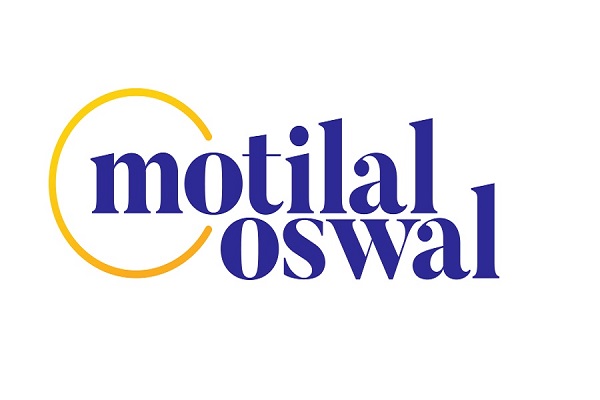

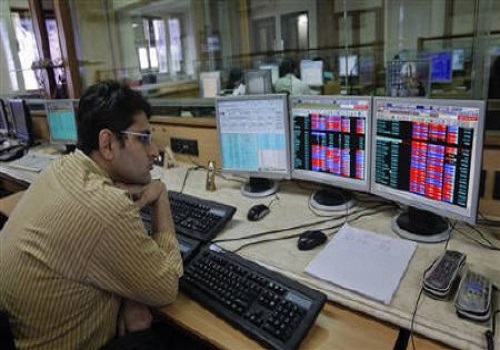
.jpg)


